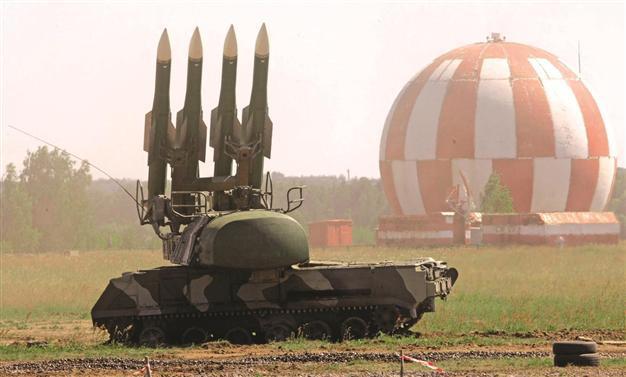Malaysian jetliner disaster highlights risks of standalone systems for Ankara
BURAK BEKDİL

This file photo shows the Buk M2 missile system in Russia. Armed separatist groups reportedly had control of a Buk missile system, which Kyiv and western countries say was used to shoot down a Malaysia Airlines plane. AP Photo
Military experts agree that the rebels in Ukraine who shot down a Malaysian jetliner, killing 298 people, may have made the tragic mistake because they did not have the right missile system to distinguish between military and civilian aircraft.The shooting took place at a time when Turkey is rethinking its decision to choose a China-made, standalone air defense system.
Observers widely agree that the Boeing 777 was brought down by an SA-11 missile fired from an area of eastern Ukraine controlled by pro-Russian separatists.
But to function correctly, an SA-11 launcher, also known as a Buk, is supposed to be connected to a central radar command – as opposed to acting alone – to be certain of exactly what kind of aircraft it is shooting at.
Experts say the rebels could easily make a tragic mistake and shoot down a passenger plane when indeed they wanted to shoot down a Ukrainian military plane. They say without a backup, a missile can be fired by operators who are not totally sure of what they are aiming at.
A Buk launcher, which is a self-propelled tracked vehicle resembling a tank, is ordinarily under the orders of a separate command post vehicle.
Concerning incidents
That was not the first disaster of its kind. Soviet air defenses in 1983 accidentally shot down Korean Airlines Flight 007, killing 269. In 1988, the USS Vincennes, a guided missile cruiser, brought down Iran Air Flight 655, with 290 people aboard, after mistaking it for an attacking warplane.
In October 2001, Siberian Airlines Flight 1812, traveling from Tel Aviv to Novosibirsk plunged into the Black Sea, killing all 78 aboard. The Ukrainian military at first denied responsibility, but later admitted its military mistakenly shot down the plane during a training exercise.
Turkish defense experts say the downing of the Malaysian jetliner should come as a warning to procurement bureaucracy that intends to go for a Chinese, standalone air defense system.
“As the Ukraine incident revealed, standalone systems can be problematic. And when you learn this, it is often too late,” said one Ankara-based analyst.
NATO warnings over compatibility
Last September, Turkey said it chose China Precision Machinery Import-Export Corp (CPMIEC) for a $3.44 billion program designed to build the country’s first long-range air and anti-missile defense system.
NATO officials and experts have since warned that the China option would force Turkey into ending up with a standalone system with little or no integration with NATO assets like radars.
About half of Turkey’s network-based air defense radars have been paid for by NATO, and are part of the NATO Air Defense Ground Environment.
One analyst said that although Turkey could always decide to build a standalone system, abstracting the air defense system from NATO assets would mean that Turkey would lose half of its radar capabilities.
Turkey would need interface data to make its own air defense architecture interoperable with NATO assets, primarily data on the Identify Friend and Foe system.
















